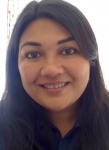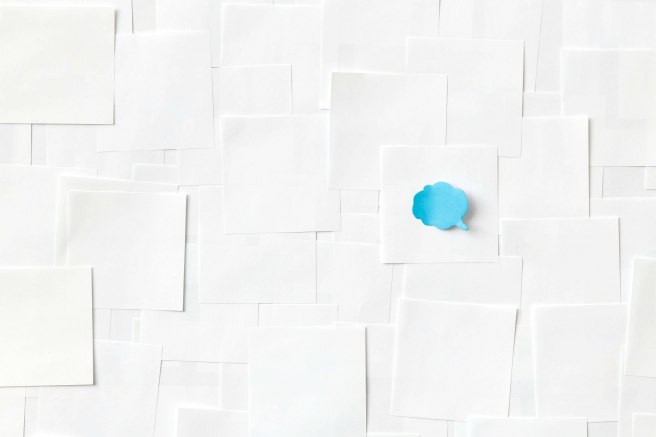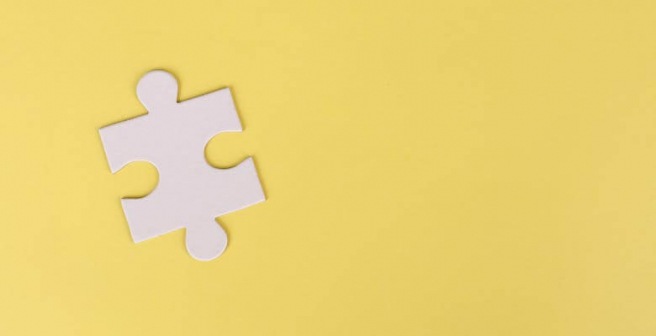Image manipulation: What’s okay and not okay and who addresses it?

Images are data used by researchers to explain their results and make evidence-based scientific claims. A good-quality image boosts the chances of manuscript acceptance. Thus, an image needs to be submitted in its original, yet presentable form per publication requirements.
Researchers often make minor tweaks to get a best representative image that can help readers interpret it easily. Such simple alterations are standard practice but may be a bit tricky. Making images attractive to catch the eye of the reader may lead researchers to introduce inappropriate changes. Inappropriate image manipulation is a serious issue that plagues the integrity of scientific publishing.
What can prompt inappropriate image manipulation?
Making inappropriate changes to images may be either unintentional or intentional. Here are some reasons why researchers may do this:
- They may not appreciate the importance of acquiring good images. The confidence and thrill of a conducting successful experiment may lead them to neglect the value of high-quality images.
- They lack the knowledge or experience needed to capture publication-quality images.
- They may be impatient. For example, sitting for too long with a microscope may feel tiresome, which may lead to sloppiness.
- They may be reluctant to repeat an experiment to capture a better picture. This happens when the researchers are sure about the validity of their data. Convinced that their work is flawless and conducted with honesty, researchers may consider minor amendments to the figure as ethical.
- They may intentionally resort to unethical image manipulation to mislead readers about the research results and overstate the importance of insubstantial data. They may be tempted to indulge in this type of scientific misconduct because of the pressure to publish in high–impact-factor journals or the lack of reliable data to support their findings.
Which types of changes to images are acceptable?
Some changes that that can be safely opted for include the following:
- Simple magnification
- Image cropping
- Partial use of brightness and contrast features, only if such adjustments are applied to the whole image and do not enhance certain sections over others
- Use of arrows/boxes to direct the attention of readers to a specific part of an image
- Image resizing as long as there is no pixel distortion
Which types of changes to images are not acceptable?
Even seemingly minor adjustments that do not affect the interpretation of results may be considered unacceptable in some cases. Some examples include the following:
- Sharpening and over-saturating images
- Changing black and white (gray scale) to color (RGB)
- Reusing or cloning a part of an image to fit with another image panel
- Stitching pictures from two different images obtained from a duplicate set of the same experiment and not declaring it: for example, stitching the negative control from one gel picture with the main picture of another gel
- Eliminating background fluorescence in an image of a fluorescently labelled sample and not declaring this
Manipulating an image to present data or information originally not observed amounts to grave scientific misconduct and may attract punitive actions against researchers and institutes. Per the guidelines of the Council for Science Editors, “No specific feature within an image may be enhanced, obscured, moved, removed, or introduced.”
The practice of producing fake image data may be more common in disciplines such as developmental biology, molecular biology, cell biology, and biomedical sciences. Examples of such unethical changes include the following:
- Using Photoshop tools to create in situ signals originally absent in the sample, or enhancing weak signals
- Using a positive DNA control in place of a test DNA sample and creating an image to provide false evidence, or adding a DNA band originally not present
- Using a single image (cells in a sample) to create varied experimental outcomes, for example, using one image to create multiple images to show false protein colocalization signals
- Putting cells from different microscope fields into a single image
- Manipulation of signals/bands in blots
How can researchers avoid inappropriate image manipulation?
If you are a researcher, you can avoid unethical image manipulation by taking precautions at different stages of your work.
Before capturing an image
- Understand the proper use of microscopes or other instruments and the software settings required for image acquisition. Work out the best contrast and brightness settings before capturing images.
- Identify the best way to prepare a clean sample to minimize background noise and thus increase the resolution and sharpness of the image naturally.
- Plan backward. Visualize the image and accordingly plan each step of your experiment. This approach may work very well for gel and western blot images.
After capturing an image
- Always preserve the original image; make all adjustments on a copy of the raw image.
- Capture images under identical settings if you need to compare images to explain your findings.
- Educate yourself on magnification and resolution requirements.
- Avoid using lossy compression algorithms such as JPEG and rather save all images as TIFF files.
- Adhere to any guidelines your target journal provides for image presentation.
- Explicitly mention in figure legends if the images were not adjusted at all or modified using an image-editing software, and if modified, which specific enhancement features were used.
Image manipulation ethics and integrity: Who is responsible?
Due diligence of all stakeholders is required to counter the pervasive practice of using fake images in research communications.
- Authors. Authors have a duty to share accurate data with the scientific community and thus ensure the progress of the global scientific enterprise. Reporting what was not originally observed is unethical, as many other researchers may use their data to generate new hypothesis and start new investigations. Hence, authors need to act with utmost honesty to keep science trustworthy.
- Peer reviewers. Peer reviewers should be alert and report to journal editors the slightest suspicion they may have of image manipulation in manuscripts.
- Journal editors. Journal editors should ensure that the journal website provides clear guidelines for image adjustments in their “instructions for authors” section. Accountability for disseminating reliable research lies with editors too, and they may also be accused of scientific misconduct if they publish fraudulent images. Thus, they should evaluate any image manipulation misconduct honestly and meticulously. Pre-publication image screening should be performed in alignment with any journal-specific guidelines and based on views of the research integrity committee (if a journal should have one). The Committee on Publication Ethics (COPE) offers guidance for editors on handling suspicions or concerns regarding falsified data in a submitted manuscript1or in a published article.2,3 It also provides guidelines on retraction.4Recently, eight major journals issued guidelines and have proposed a three-tier system for identifying forged and inappropriate images.5 Publishers have begun using forensics technologies6 to catch phony adjustments, duplication and other common deceptive distortions to an image.
- Institutes. Misconduct by researchers can endanger the reputation of the universities or research institutes to which authors are affiliated. Institutes should, therefore, take steps to prevent misconduct by researchers by providing adequate training on research and publication ethics to graduate students and staff alike. They should also proactively investigate image-related malpractices and take appropriate action to address them and deter similar behavior in the future
- Readers. Should any instances of suspicious images escape the notice of the editorial staff or peer reviewers, readers can flag them. They may use online platforms such as Pubpeer to discuss the published articles, provide feedback, and raise concerns.
- Research Integrity professionals. With an increase in incidents of image manipulation, newer roles such as data integrity professionals7 are gaining popularity. These individuals critically analyze research data to identify problematic research. Elisabeth Bik, recently awarded the 2021 John Maddock prize for her contribution towards ensuring research ethics in publishing,8 is a name to reckon with. Bik’s work encompasses data and image manipulation across 5,000 scientific papers. Her work has resulted in retractions/corrections and ignited discussions on research ethics. Consultancy services such as Image Data Integrity are working closely with journals to identify fake images. A collaborative network of expert professionals has thus emerged9 to compile best practices and frame guidelines to circumvent any intent of data fraud.
Inappropriate image manipulation is a major and pervasive ethical problem faced by the scholarly community. Therefore, collective effort by all the stakeholders and multipronged measures are essential to address it effectively.
References
- Committee on Publication Ethics: COPE. Fabricated data in a submitted manuscript. COPE: Committee on Publication Ethics https://publicationethics.org/resources/flowcharts/fabricated-data-in-submitted-manuscript.
- Committee on Publication Ethics: COPE. Fabricated data in a published article. COPE: Committee on Publication Ethics https://publicationethics.org/resources/flowcharts/fabricated-data-published-article.
- Committee on Publication Ethics: COPE. Image manipulation in a published article. COPE: Committee on Publication Ethics https://publicationethics.org/resources/flowcharts/image-manipulation-published-article.
- Committee on Publication Ethics: COPE. Retraction guidelines. COPE: Committee on Publication Ethics https://publicationethics.org/retraction-guidelines.
- Holly Else. Publishers unite to tackle doctored images in research papers. Nature https://www.nature.com/articles/d41586-021-02610-7 (2021).
- Thorsten S. Beck. HEADT Centre – How to Detect Image Manipulations? Part 3. The Headt Centre https://headt.eu/How-to-Detect-Image-Manipulations-Part-3/ (2017).
- Richard Van Noorden. The image detective who roots out manuscript flaws | Nature. Nature https://www.nature.com/articles/nature.2015.17749 (2015).
- Sense about Science. John Maddox Prize 2021 Winners – Sense about Science. https://senseaboutscience.org/activities/john-maddox-prize-2021-winners-announcement/.
- Rossum, J. van et al. STM Recommendations for handling image integrity issues. (2021).
Additional reading
- International Federation of Clinical Chemistry and Laboratory Medicine “Publication Ethics and Ethics in Science” (November 2012) https://www.ifcc.org/media/161822/IFCC%20Ethics%20in%20Science.pdf
- Office of Research Integrity https://ori.hhs.gov/education/products/RIandImages/guidelines/list.html
- CSE’s White Paper on Promoting Integrity in Scientific Journal Publications https://www.councilscienceeditors.org/wp-content/uploads/CSE-White-Paper_Feb2022_webPDF.pdf
- Miura K, Nørrelykke SF. Reproducible image handling and analysis. EMBO J. 2021 Feb 1;40(3):e105889. doi: 10.15252/embj.2020105889. Epub 2021 Jan 22. PMID: 33480052; PMCID: PMC7849301. https://pubmed.ncbi.nlm.nih.gov/33480052/
- ORI “Forensic Images Samples” for the quick examination of scientific images https://ori.hhs.gov/samples
- Bik EM, Casadevall A, Fang FC. The Prevalence of Inappropriate Image Duplication in Biomedical Research Publications. mBio. 2016 Jun 7;7(3):e00809-16. doi: 10.1128/mBio.00809-16. PMID: 27273827; PMCID: PMC4941872.
- The art of detecting data and image manipulation. Elsevier Connect. Anthony Newman, November 2013. https://www.elsevier.com/connect/editors-update/the-art-of-detecting-data-and-image-manipulation
- Shen H. Meet this super-spotter of duplicated images in science papers. Nature. 2020 May;581(7807):132-136. doi: 10.1038/d41586-020-01363-z. PMID: 32405024.https://pubmed.ncbi.nlm.nih.gov/32405024/





